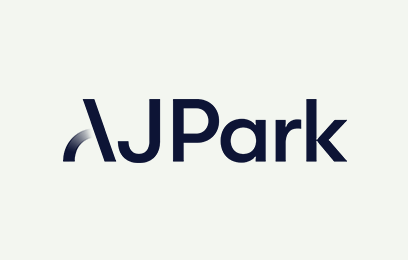What is a registered design?
A registered design protects the way a product or part of a product looks, but not the way it works.
Examples of products that can be protected by registered designs include almost any physical object, such as consumer packaging, machinery, toys, furniture, extrusion cross-sections, jewellery, clothing, and patterns on wallpaper and textiles. Many countries, including the United States and China, also allow design protection on graphical user interfaces (GUIs), commonly referred to as screen displays.
Why are registered designs important?
Protecting visual features can be important to help stop others from making a product that looks the same or similar. Patents can provide protection for the way something works, but sometimes a new product is not eligible for patent protection and therefore registered designs are the only form of intellectual property (IP) protection available.
Although in some cases how the product looks may not be as important as how it works, that may not always be the case. For many products, such as consumer products, shape or appearance can hugely influence a buyer’s decision on whether or not to purchase the product. Therefore, if the appearance of the product is commercially important, a registered design should be filed to stop others competing with a product that looks the same or similar. A simple question to ask is, ‘How annoyed would you be if someone made and sold a product that looked the same?’
Getting a registered design costs a lot less than getting a patent. Registered designs are also quicker to get approved by patent offices. Often, we recommend clients get both patent and registered design protection, as a design registration can protect against copying an invention’s appearance until a patent is granted to protect the way the invention works. This helps deter would-be infringers that spend no time trying to design a different looking version of a new invention.
Design drawings
Since the scope of design protection relies heavily on drawings, it is essential to include high-quality drawings of the product that are clear and accurate. The drawings need to include multiple views to sufficiently show all of the product design. Although photographs are permitted in many jurisdictions, line drawings are most preferred.
The requirements for drawings are not the same in all jurisdictions. The table below summarises some of the similarities and differences for drawing requirements in some of the main jurisdictions.
|
|
Total number of views |
Photographs |
Colour photographs/drawings |
Contouring/surface shading |
|
New Zealand |
No limit |
Allowed |
Allowed |
Allowed |
|
Australia |
No limit |
Allowed |
Allowed |
Allowed |
|
United States |
No limit |
Allowed |
Allowed |
Allowed1 |
|
China |
Maximum of 6 views |
Allowed |
Allowed |
Not Allowed |
|
Europe |
Maximum of 7 views |
Allowed |
Allowed |
Allowed |
1- In United States, appropriate surface shading should be used to show the character and/or contour of all surfaces represented. Surface shading should also distinguish between any open and solid areas of the design.
Design registration in more than one country
Through international treaties, an initial design application may be filed in one country and can serve as a springboard for filing corresponding applications abroad, as long as the foreign applications are filed within six months of that first filing date.
If you are intending to file your design application abroad, it is prudent to prepare the drawings of the initial application by taking considerations of the fact that the rules and practice governing the drawings in the design application may differ depending on the jurisdiction. Such considerations can help with the smooth design registration process of a corresponding design application. Lack of such considerations on the other hand may potentially prevent you from using the initial design application as the springboard for filing corresponding applications abroad, which is not desirable in most cases.
What are the requirements for registered design protection?
To qualify for registered design protection, the product shape must be new and distinctive. This essentially means that to get a registered design for a product, the product shape (or part of it) need to be different to what has been around before the filing date.
As summarised in the below table, some countries provide a ‘grace period’ whereby if an applicant files a design application within a certain time after publicising the product, then the earlier disclosure is not considered to be prior art to the design application. However, not all countries provide grace periods for designs. Therefore, it is important that the product design is kept confidential and not commercialised or published before a design application is filed. Otherwise, it may not qualify for design protection in those countries that do not provide a grace period or only provide a grace period in limited circumstances.
The table below summarises some of the other differences in the main jurisdictions that are worth noting:
|
|
Claims/Statements required? |
Maximum term of protection |
Grace period |
|
New Zealand |
Yes2 |
15 years |
No grace period |
|
Australia |
No3 |
10 years |
No grace period |
|
United States |
Yes |
15 years5 |
12 months |
|
China |
Yes4 |
10 years |
6 months6 |
|
Europe |
No |
25 years |
12 months |
2– In New Zealand, a Statement of Novelty regarding what is novel about the design must be filed.
3- In Australia, a Statement of newness and distinctiveness that identifies particular visual features of the design as new and distinctive can be included. But it is not mandatory.
4- In China, brief description of the design should be provided.
5- In United States, the maximum term of protection of a design is 15 years from date of grant. This is different from most other jurisdictions where the maximum term of protection is counted from the filing date.
6- China provides a limited 6-month grace period for designs disclosed under limited circumstances, namely 1) disclosed at international exhibitions sponsored or recognised by the Chinese government, 2) disclosed at certain academic conferences, or 3) disclosed by another person without the consent of the applicant.
How can AJ Park help?
Our experienced team of IP experts can assist with any IP-related matter relating to designs including:
- advising you on protecting the designs in New Zealand, Australia and other countries
- registering the layout designs in countries of interests
- preparing licencing and other commercial agreements
- enforcement of your design rights in New Zealand and overseas.







